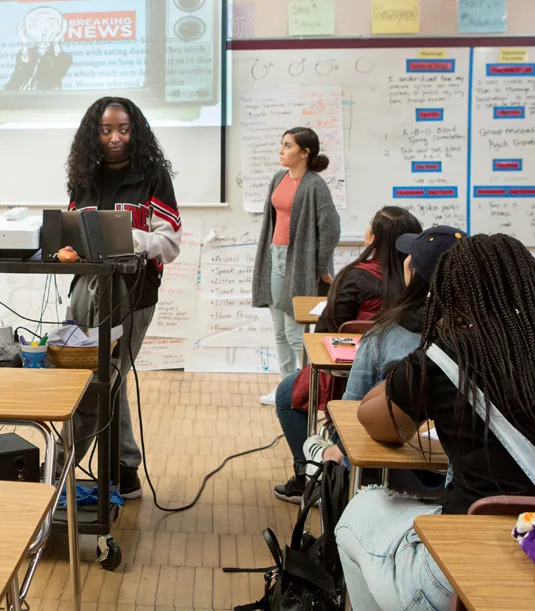College in high school programs such as dual enrollment, concurrent enrollment, and early college high school are effective models for promoting postsecondary access and success, particularly for low income students, students of color, and other students who are historically underserved and underrepresented in higher education.
However, because the proliferation of college in high school programs was not coordinated by a single entity, the organic growth of programs and models across the United States has led to significant variation in what we call them, how they operate, and who they serve.
A 2013 analysis by the Higher Learning Commission (HLC), for example, found 38 different terms used in state policy across the country to describe college in high school programs. Not all of the terms collated by HLC describe a distinctive college in high school program, but this illustrates that the meanings and applications of each of these terms can change from state to state.
A COMMON DEFINITION
While there can be significant variation among college in high school programs in terms of modality, structure, and terms, the College in High School Alliance has developed a definition of the core elements that all college in high school programs share, regardless of their differences in program structure or nomenclature:
- College in High School Programs are partnerships between school districts and accredited institutions of higher education that provide high school-age students an intentionally-designed authentic postsecondary experience leading to officially transcripted and transferable college credit towards a recognized postsecondary degree or credential.
In addition to highlighting what unites all college in high school programs, regardless of their structure or what they call themselves, this definition also distinguishes college in high school programs collectively from credit by exam models such as Advanced Placement (AP) and International Baccalaureate (IB). This differentiation is important as college in high school programs are authentic college courses through which students will always receive transcripted postsecondary credit if they pass the course, rather than on the basis of a single examination for a course taken at the high school level.
WHERE PROGRAMS DIFFER
In addition to situations where different terms are used to describe the same type of college in high school program in different states, there are also a number of substantive structural differences between program types that contribute to the multiple terms in use to describe the act of a high school student taking a college course.
COMMON STRUCTURAL DIFFERENCES MAY INCLUDE:
- Location of instruction (whether the student receives instruction at the high school or on the college campus).
- Type of instructor (whether the student receives instruction from a high school teacher or college faculty).
- Whether the student receives high school credit for the course in addition to college credit.
- Whether the program is a whole-school model or offered as part of a suite of available options for students at that high school.
- The level of support services offered to students.
- Whether the program is tuition free or tuition charging.
- Which entity is funding the costs of the program beyond any tuition charged to students, such as the high school, college, other entity, or some combination.
- Whether the program caters to a specific population of high school students.
- The length of the program (whether the program ends at the conclusion of 12th grade or extends to additional years).
FEDERAL DEFINITIONS
The Every Student Succeeds Act provides federal definitions for the terms “Dual or Concurrent Enrollment” and “Early College High School,” which are the terms used in federal statute to describe these programs.
DUAL OR CONCURRENT ENROLLMENT
A dual- or concurrent-enrollment program is offered by a partnership between at least one institution of higher education and at least one local educational agency through which a secondary school student who has not graduated from high school is able to enroll in one or more postsecondary courses and earn postsecondary credit that:
- Is transferable to the institutions of higher education in the partnership
- Applies toward completion of a degree or recognized educational credential as described in the Higher Education Act of 1965.
EARLY COLLEGE HIGH SCHOOL
The term ‘early college high school’ means a partnership between at least one local educational agency and at least one institution of higher education that allows participants to simultaneously complete requirements toward earning a regular high school diploma and earn not less than 12 credits that are transferable to the institutions of higher education in the partnership as part of an organized course of study toward a postsecondary degree or credential at no cost to the participant or participant’s family.
For more information, download the full glossary, which includes information on the different terms and how they are used in states.

